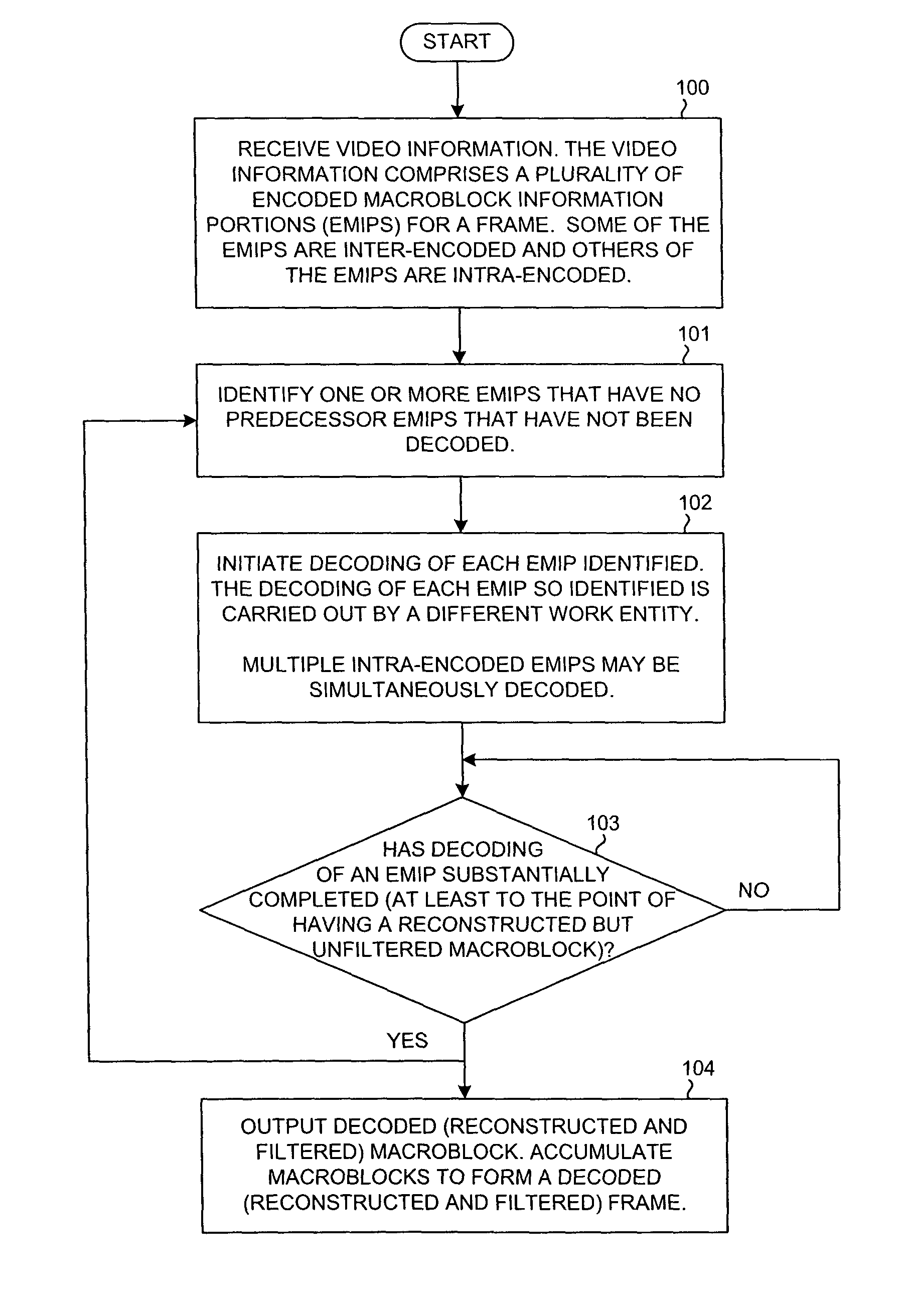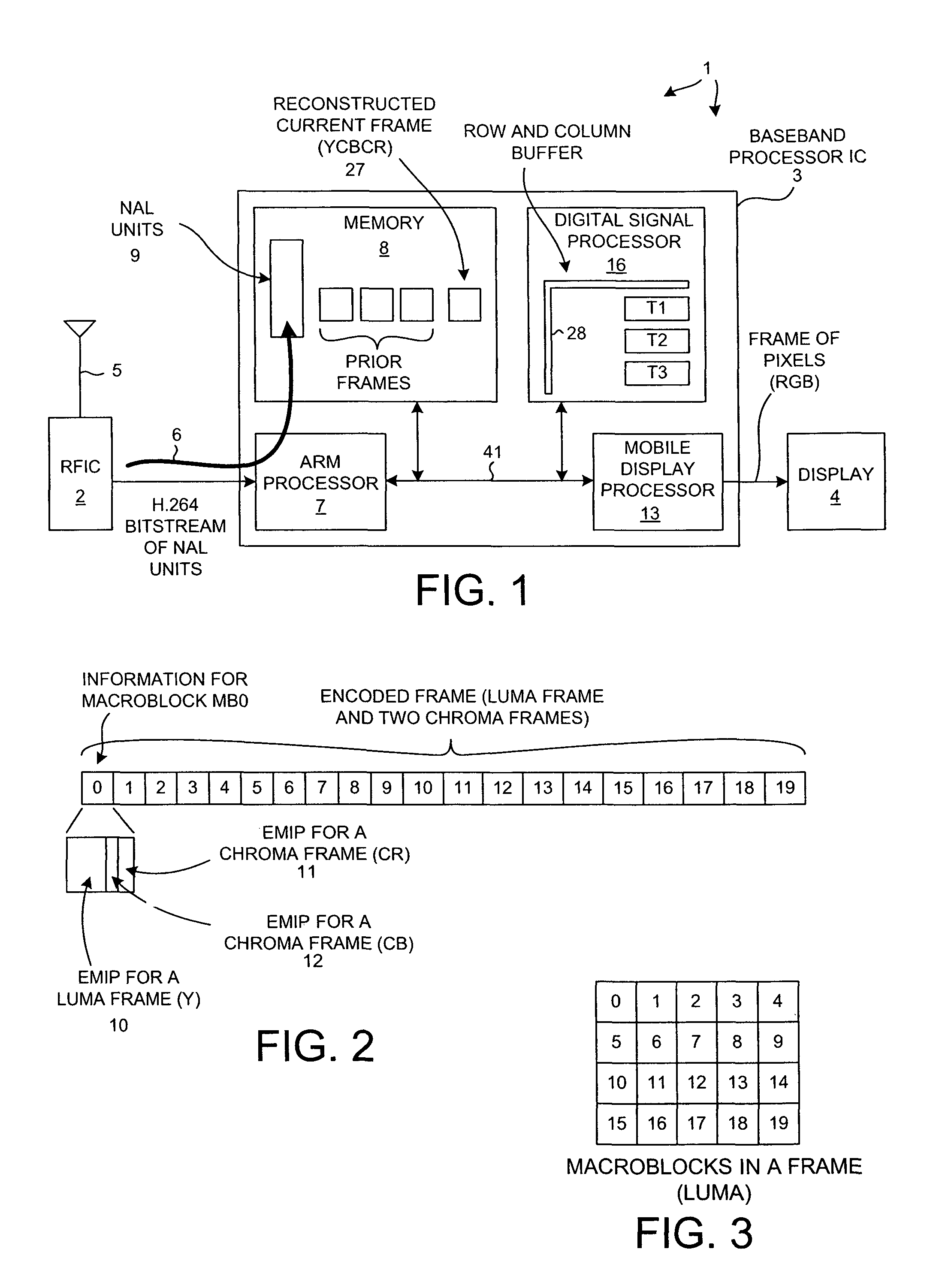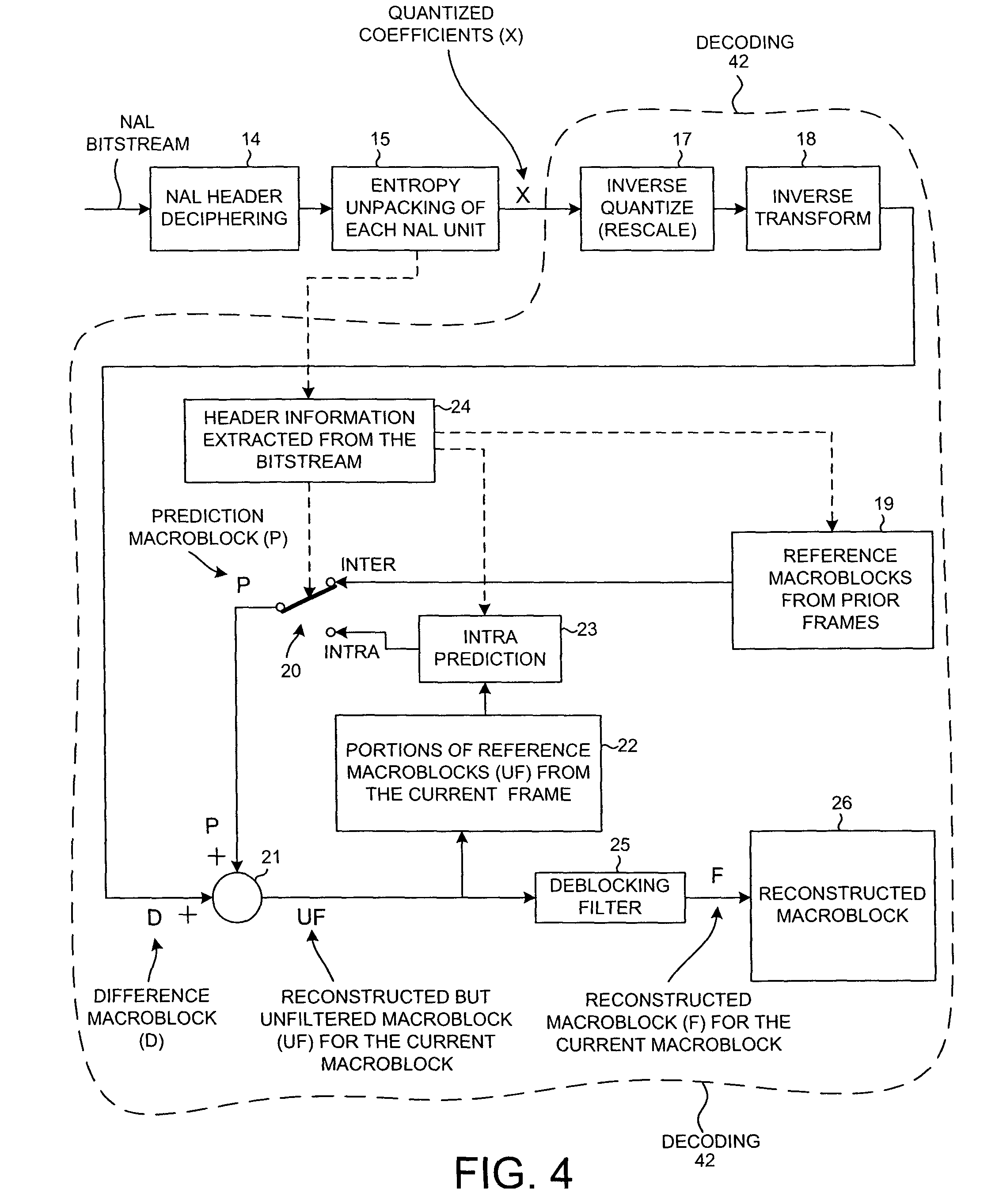Parallel decoding of intra-encoded video
a video and video technology, applied in the field of video decoding, can solve the problems of limiting the clock speed of a digital signal processor that can be realized to about one hundred megahertz, and the one hundred megahertz digital signal processor does not have adequate throughput to carry out the required amount of processing
- Summary
- Abstract
- Description
- Claims
- Application Information
AI Technical Summary
Benefits of technology
Problems solved by technology
Method used
Image
Examples
Embodiment Construction
[0025]FIG. 1 is a block diagram of a mobile communication device 1. Mobile communication device 1 in this example is a cellular telephone that includes a Radio Frequency Integrated Circuit (RFIC) 2, a baseband processor integrated circuit (BPIC) 3, and a display 4. RFIC 2 includes an analog circuit for receiving RF cellular telephone signals from an antenna 5, processing and converting the signals into digital form, and communicating the resulting digital information to BPIC 3. RFIC 2 also includes circuitry for receiving digital information from BPIC 3, for processing and converting the digital information into analog form, and for transmitting the information as RF signals from antenna 5. In addition to supporting cellular telephone communication, BPIC 3 also serves as a hardware platform for running various application layer programs. One such application in the present example is a video decoding application. BPIC 3 includes a video CODEC (enCOder / DECoder) functionality. A strea...
PUM
 Login to View More
Login to View More Abstract
Description
Claims
Application Information
 Login to View More
Login to View More - R&D
- Intellectual Property
- Life Sciences
- Materials
- Tech Scout
- Unparalleled Data Quality
- Higher Quality Content
- 60% Fewer Hallucinations
Browse by: Latest US Patents, China's latest patents, Technical Efficacy Thesaurus, Application Domain, Technology Topic, Popular Technical Reports.
© 2025 PatSnap. All rights reserved.Legal|Privacy policy|Modern Slavery Act Transparency Statement|Sitemap|About US| Contact US: help@patsnap.com



